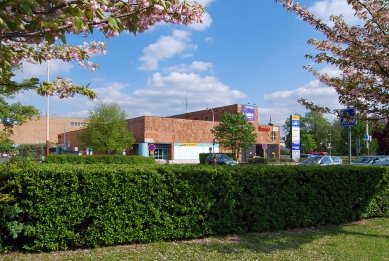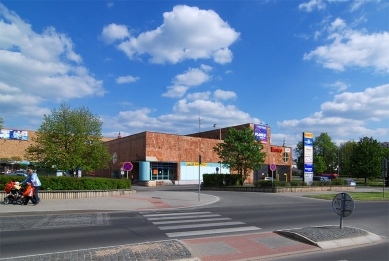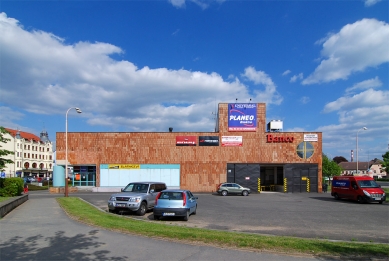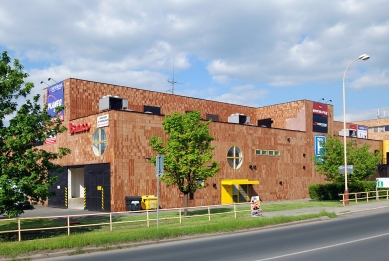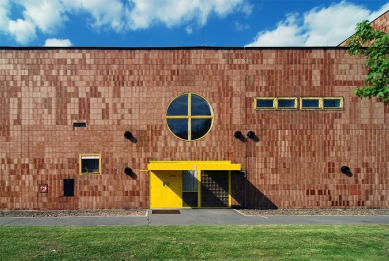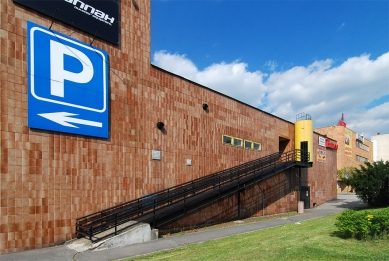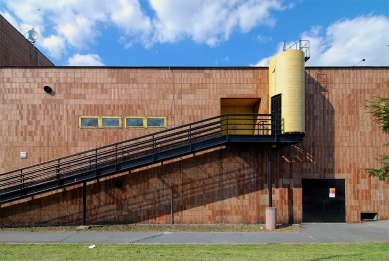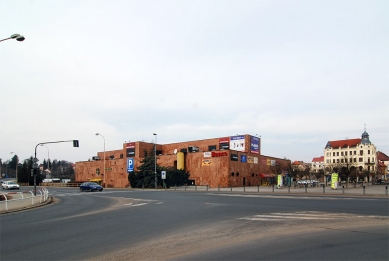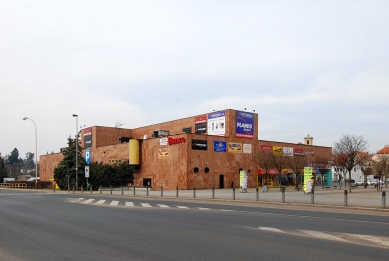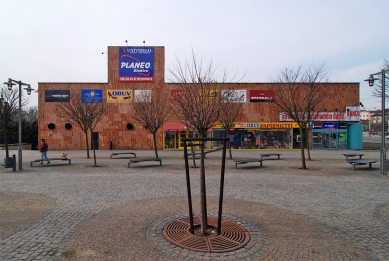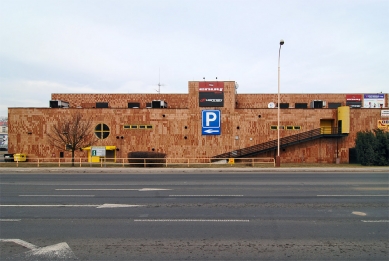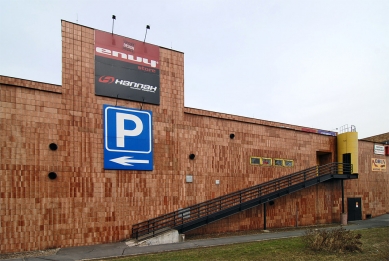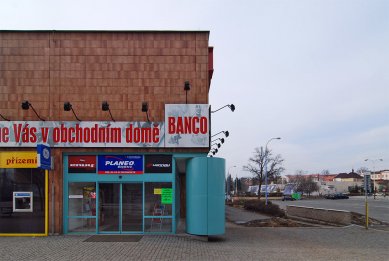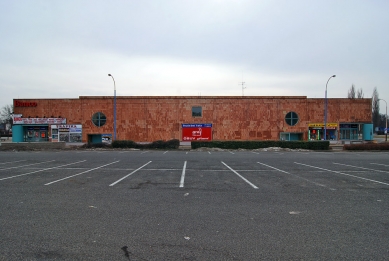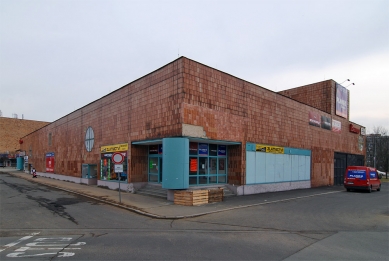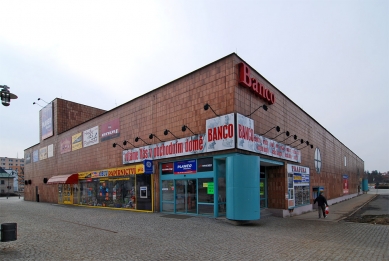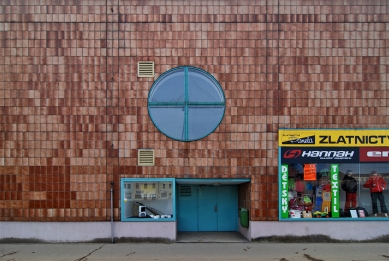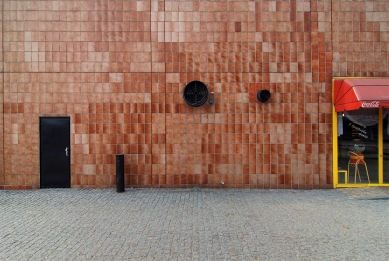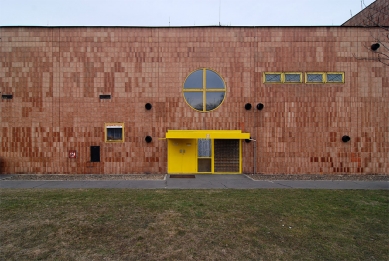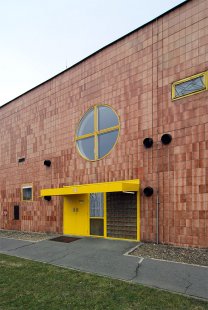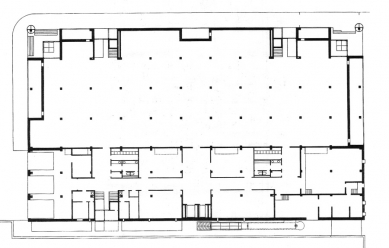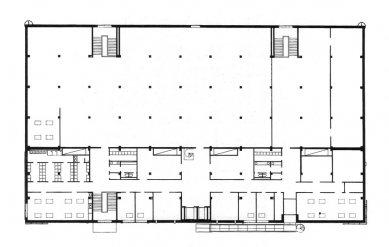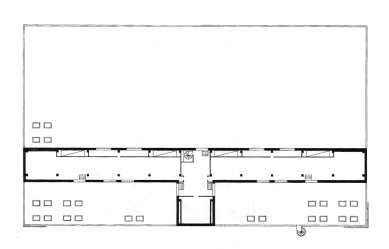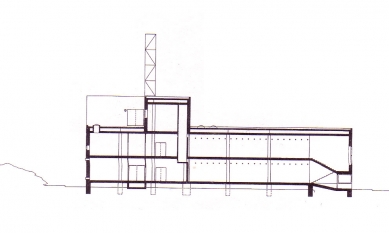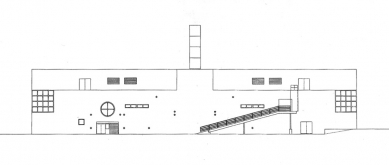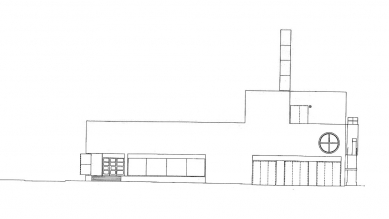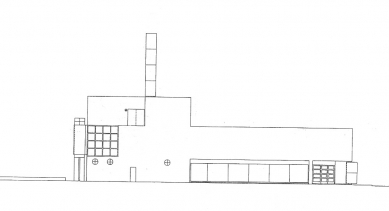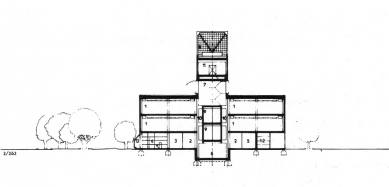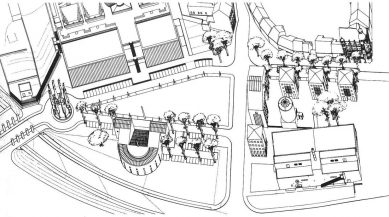
<translation>Business Center Uran</translation>

The affiliation of functionalism in the 1920s and 1930s with simple geometric shapes stemmed from the belief that such shapes were the most purposeful. For Le Corbusier (and long after him Jacques Herzog) geometry appeared as a manifestation of nature's hidden order. At other times, Le Corbusier saw something specifically human in geometry: only creations of man can be purely geometric. The neo-functionalist projects of Emil Přikryl from the late 1970s and early 1980s always somehow touched on these themes. The trick, it seems to me, lay in the fact that their geometric order was almost always different from the geometry of authentic functionalist architecture. It was an order that was more symmetrical, tighter, more complex, and more imaginative.
The design of the Uran shopping center in Česká Lípa (1975, 1980) originally connected to a block of dilapidated old houses in its northern neighborhood. However, before the realization took place, the block was demolished, and Přikryl's work thus lost all external urban relations. In the first variant from 1975, Emil Přikryl conceived Uran as a five-aisled hall in the prescribed construction system MS-72. He concentrated all air conditioning, services, and stairs in the central "aisle" and in the tower mounted on it, "as if the building itself was taking place in the middle and above." In the executed variant from 1980-83, which was wider and accessible from the north, the services were moved to the southern side. The symmetry and geometrically clear neo-functionalistic details remained, but the slender advertising tower in the transverse axis of the building was eliminated. The brown ceramic facade makes Uran a heavy and brutal building. However, it withstands today’s large advertisements on its surface and predatory users within its interior.
Further literature:
Czechoslovak Architect XXXI, 1985, no. 23, p. 3
Casabella no. 512, April 1985, pp. 12-13
Visual Art, 1990, no. 5, p. 61
The design of the Uran shopping center in Česká Lípa (1975, 1980) originally connected to a block of dilapidated old houses in its northern neighborhood. However, before the realization took place, the block was demolished, and Přikryl's work thus lost all external urban relations. In the first variant from 1975, Emil Přikryl conceived Uran as a five-aisled hall in the prescribed construction system MS-72. He concentrated all air conditioning, services, and stairs in the central "aisle" and in the tower mounted on it, "as if the building itself was taking place in the middle and above." In the executed variant from 1980-83, which was wider and accessible from the north, the services were moved to the southern side. The symmetry and geometrically clear neo-functionalistic details remained, but the slender advertising tower in the transverse axis of the building was eliminated. The brown ceramic facade makes Uran a heavy and brutal building. However, it withstands today’s large advertisements on its surface and predatory users within its interior.
Rostislav Švácha: The Energy of Geometry
Emil Přikryl and His School, Galerie Jaroslava Fragnera 1995, pp. 45-46
Emil Přikryl and His School, Galerie Jaroslava Fragnera 1995, pp. 45-46
Further literature:
Czechoslovak Architect XXXI, 1985, no. 23, p. 3
Casabella no. 512, April 1985, pp. 12-13
Visual Art, 1990, no. 5, p. 61
The English translation is powered by AI tool. Switch to Czech to view the original text source.
36 comments
add comment
Subject
Author
Date
Dík
Jiří Schmidt
23.05.11 04:41
zabuda
vlado
23.05.11 08:31
Kriticky
Vích
23.05.11 10:47
RE: Kriticky
Lukáš Beran
24.05.11 11:38
taky kriticky
krteczek
24.05.11 11:51
show all comments


